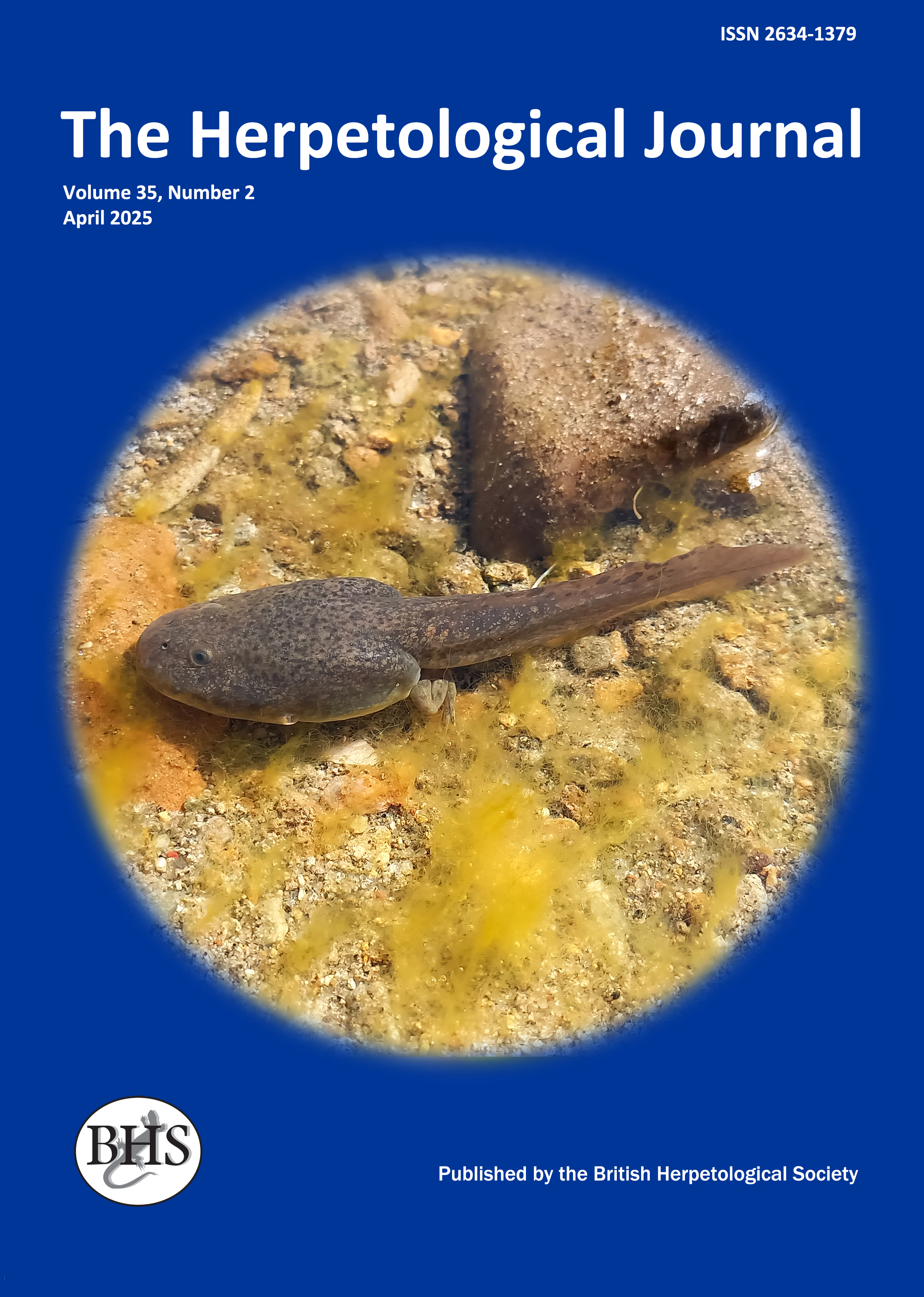
The Herpetological Journal
The Herpetological Journal is the Society's prestigious quarterly scientific journal. Articles are listed in Biological Abstracts, Current Awareness in Biological Sciences,Current Contents, Science Citation Index, and Zoological Record.
ISSN 0268-0130
2021 Impact Factor from Clarivate for the Herpetological Journal is 1.194, an increase of 0.332 from 2020.
pdf 06. Ecomorphological guilds in anuran larvae: an application of geometric morphometric methods
1753 downloads
Open Access
pp. 149-162
Authors: Candioti, M. Florencia Vera
Abstract: Ecomorphological guilds for anuran larvae are based on developmental modes, external morphology and habitat. Furthermore, several authors have investigated relationships between internal morphology and ecological habits. However, the relationships between internal morphology and tadpole ecological habits are not well established. In the present paper the quantitative methodology of geometric morphometrics is applied to look for correlation between the anatomy hyobranchial skeleton and the ecology of anuran larvae. Tadpoles of 14 species belonging to six different ecomorphological guilds were studied. The specimens were cleared and stained, and the hyobranchial apparatuses removed and drawn in ventral view. To record the shape variation, landmark-based geometric morphometric methodology was applied, involving a Relative Warp Analysis followed by multivariate statistics. Results show that species classify into four significantly different groups, according to their hyobranchial apparatus shape. Macrophagous tadpoles have well-developed ceratohyals and hypobranchial plate developed, and branchial baskets highly reduced. Generalized tadpoles have a large ceratobranchial area, with the hypobranchial plate covering a smaller area. Microphagous tadpoles have a very developed and complex branchial basket, and their hypobranchial plates are strongly reduced. Megalophagous tadpoles have the ceratohyals laterally expanded. These four groups are in general maintained after the inclusion of more species from the literature. Morphological groups can be related to size of food particles consumed, from very large in megalophages and macrophages, to very small, in highly efficient microphages.
Keywords: TADPOLE, FROG, HYOBRANCHIAL SKELETON, FEEDING HABIT, MORPHOLOGY

